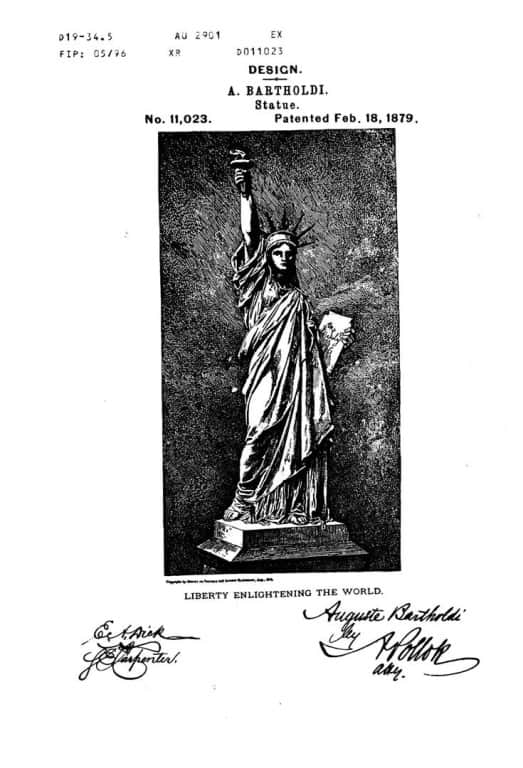When most people think about patents, they often think about inventions and machines – something along the lines of Thomas Edison’s lightbulb.
But patents – specifically design patents – can also protect the ornamental, non-functional elements of a product.
In the US, design patents cover the ornamental design of a functional item. For example, the original curvy shape of a Coca-Cola bottle and the rounded corners of the original iPhone are or were covered by design patents. Things like fonts and computer icons can also be covered by design patents.
Sculptor Auguste Bartholdi was granted a design patent for his design of the Statue of Liberty (properly known as “Liberty Enlightening the World”), which covered small copies of the statue. The sale of the small copies helped pay for the giant statue in New York harbor.
Other countries have a similar concept called a “registered design” or a “registered industrial design.”
Design patent protection allows the patent owner to take action to prevent a substantially similar object from being made, used, copied, or imported into the US.
The process for applying for a design patent is described in the US Patent and Trademark Office (USPTO) Design Patent Application Guide.
As the USPTO describes it,
A design consists of the visual ornamental characteristics embodied in, or applied to, an article of manufacture. Since a design is manifested in appearance, the subject matter of a design patent application may relate to the configuration or shape of an article, to the surface ornamentation applied to an article, or to the combination of configuration and surface ornamentation. A design for surface ornamentation is inseparable from the article to which it is applied and cannot exist alone. It must be a definite pattern of surface ornamentation, applied to an article of manufacture.
Unlike utility patents, which protect the way an item works and can include any number of claims, a design patent application can include only a single claim.
A single item can be covered by both utility and design patents. For example, on one day in 2020, the USPTO officially published 41 newly granted patents for the iPhone 11, covering things like the textured back glass, AirPod enhancements, and the Force touch feature.
Unlike utility patents, which can take years to be granted (23.5 months on average, at the moment, but sometimes much longer), design patents can often be obtained in less than a year. Preparing and filing a design patent application typically costs about one-fourth of the cost of filing a utility patent application.
Once a design patent is granted, the owner can enforce its rights against copycats in various ways:
- Via the Amazon Brand Registry (for products sold on Amazon), as we discussed in this blog
- Via patent litigation (including seeking injunctions against the sale of infringing items)
- Seeking an ITC investigation under section 337 of the Tariff Act of 1930 (19 U.S.C. § 1337)
In 2019, the Counterfeit Goods Seizure Act of 2019 (CGSA) was introduced to the US Senate, proposing an amendment to 19 U.S.C. § 1595(a)(c)(2)(C). If it becomes law, the CGSA would give US Customs officials greater power to enforce recorded design patent rights at the border by seizing infringing goods. Unfortunately, the progress of the CGSA seems to have stalled.
Just like the haiku above, we like to keep our posts short and sweet. Hopefully, you found this bite-sized information helpful. If you would like more information, please do not hesitate to contact us here.


